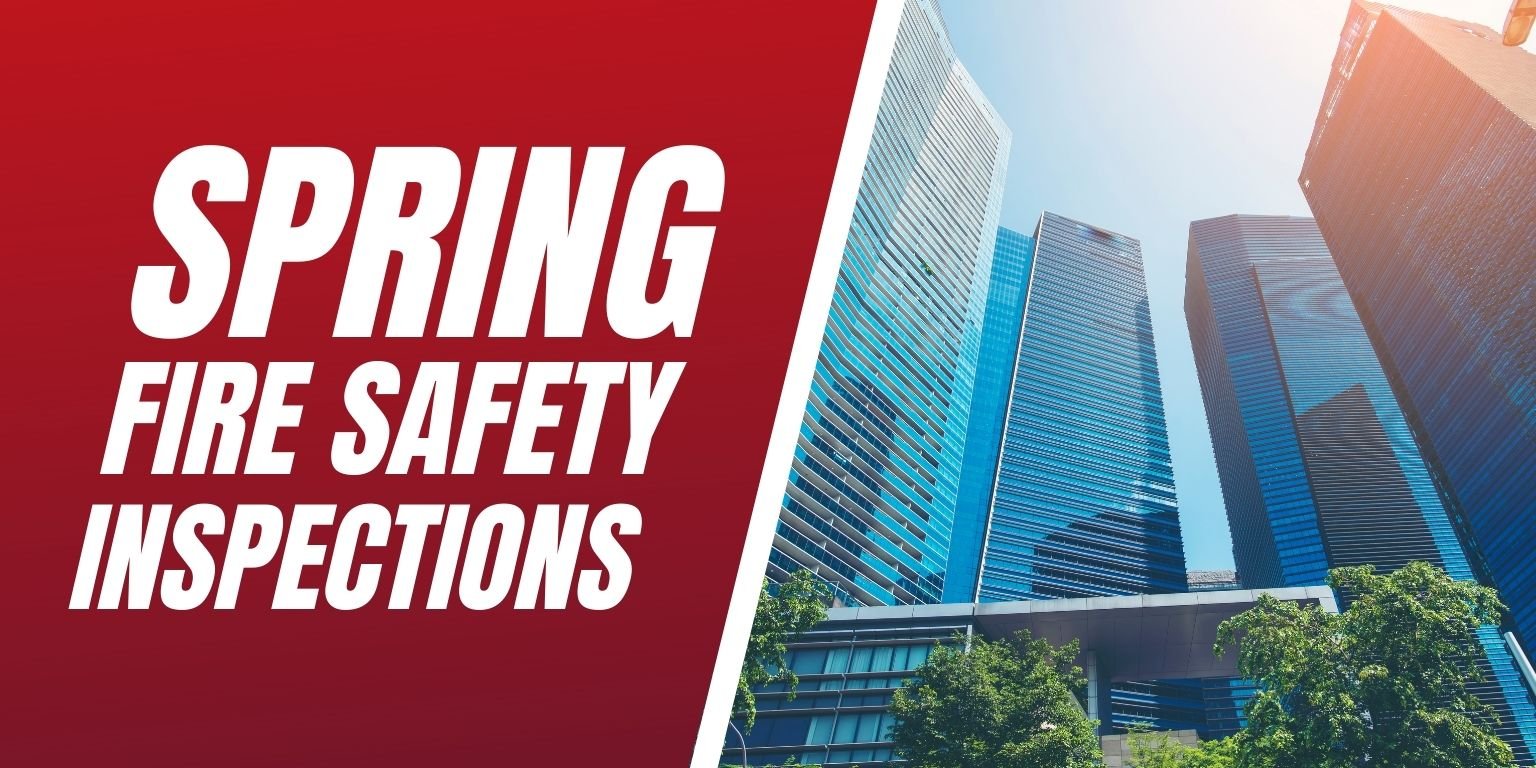
Spring cleaning may also include the facilities fire safety inspections and/or maintenance that is routinely completed. Prepare for a busy summer ahead by crossing off all fire safety tasks now and you’ll be given the peace of mind that the facility is in top shape to handle the summer schedule and keep employees & building occupants safe.
Fire doors, fire and smoke dampers, along with firestopping will most likely be items on your list to maintenance or inspect for non-compliance. Some fire safety features are not due for an annual inspection; however, it is good practice to still provide all fire safety components an eye test and quick examination to ensure everything is compliant and make sure nothing looks out of place or inconsistent.
Fire Door Inspections
Fire door inspections should always be completed by a knowledgeable professional as these devices are complex and critical to the fire safety plan. The importance of having a professional perform the inspections is due in part by their life saving function in the event of a fire. Fire doors play a vital role in keeping all building occupants out of harm by providing a safe route for evacuation. The AHJ will enforce all code regulations, stay on top of deadlines and avoid any fines.
NFPA 80 – Fire Door Inspection Guidelines
- Labels are clearly visible and legible.
- No open holes or breaks exist in surfaces of either the door or frame.
- Glazing, vision light frames, and glazing beads are intact and securely fastened in place, if so equipped.
- The door, frame, hinges, hardware and noncombustible threshold are secured, aligned, and in working order with no visible signs of damage.
- No parts are missing or broken.
- Door clearances do not exceed clearances listed in 4.8.4 and 6.3.1.7.
- The self-closing device is operational; that is, the active door completely closes when operated from the fully open position.
- If a coordinator is installed, the inactive leaf closes before the active leaf.
- Latching hardware operates and secures the door when it is in the closed position.
- Auxiliary hardware items, that interfere/prohibit operation, are not installed on the door and frame.
- No field modifications to the door assembly have been performed that void the label.
- Meeting edge protection, gasketing and edge seals, where required, are inspected to verify their presence and integrity.
- Signage affixed to a door meets the requirements listed in 4.1.4.
Common Fire Door Deficiencies
- Painted, missing or illegible fire door labels
- Poor clearance dimensions around perimeter of a closed door
- Kick down door holders
- Auxiliary hardware items that interfere with the intended function of the door (barrel bolts and dead bolts, etc.)
- Area surrounding the fire door assembly blocked by furniture, equipment and/or boxes
- Broken, defective or missing hardware items (latch bolts and/or strike plated, closer arms, cover plates, etc.)
- Fire exit hardware installed on doors that are not labeled for use with fire exit hardware
- Missing or incorrect fasteners
- Bottom flush bolts that do not project 1/2″ into the strike
Damper Inspections
Fire and smoke dampers are notorious for failing routine inspections which makes meeting inspection deadlines even more important as the odds of there being malfunctions are high. Dampers function to compartmentalize buildings which as we all know is critical to fire safety plan that is designed to ensure all occupants are safely able to evacuate the building in the event of a fire emergency.
Fire and Smoke Damper Code
Fire Damper - NFPA 80 – Section 19.4 - Each damper shall be tested and inspected one year after installation. The test and inspection frequency shall then be every 4 years, except in hospitals, where the frequency shall be 6 years.
Smoke Damper - NFPA 105 – Section 6.5 - Each damper shall be tested and inspected one year after installation. The test and inspection frequency shall then be every 4 years, except in hospitals, where the frequency shall be 6 years.
Firestopping Inspections
Firestopping is an important component to a facilities passive fire protection system. It is designed to restore an hourly fire endurance rating back to a fire barrier that is lost when an opening or penetration has occurred. Firestopping compartmentalizes the facility and prevents the spread of flames and smoke throughout the structure. Firestopping should be properly surveyed and installed as it is strictly mandated by codes.
“The 2006 International Fire Code and the 2009 International Fire Code both require the routine maintenance of fire barrier walls. Walls should be properly repaired when damaged, altered, breached or penetrated. Any penetrations found should be repaired with approved methods capable of resisting the passage of smoke and fire...”
Life Safety Services- You’re Safe with Us!
Spring cleaning isn’t fun and neither is dealing with the code deadlines that come with all components of the fire safety plan. Luckily, the LSS team is standing by ready to assist you in the inspection and repair processes. Our team of qualified technicians will get the job done efficiently while restoring peace of mind that the facility is compliant and safe for all occupants.
Contact our team today to schedule an appointment.

